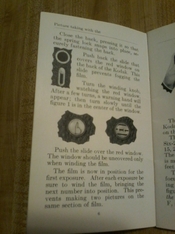There was a camera, built between the 30s and the 50s that had such an advance for 120 film.
View attachment 313995
You need to know when the first image is in place (red window for 120 fim in this case, but counting turns would work as well). Then you lift the advance knob and put the number "1" at the index mark. After each photo you make one full term plus the way to the next number (except 11 and 12, where it's less than a full term, the roll being thicker). Works like a charm. It should be possible to work the pattern out for 220 film...
For more information see
https://www.120folder.com/certo_ssd.htm
I remember gawking for minutes at that camera when I read about it on that very page a few years ago.
Just amazing, with so many brilliant ideas, although undoubtedly over designed in some respects.
But somehow the simple, and certainly not over designed winding counter escaped me.
Just a truely fantastic idea!
The reason it never got copied was undoubtedly the very strict and detail oriented German patent law.
The reason for a lot of other strange decisions in other German cameras.
It should be rather easy to replicated. Even in the most simple hobo fashion by just writing numbers with an alcohol based marker on the knob, with a randomly placed index mark, as you wind film in the normal fashion with red window.
When you load the next spool you wind to “1” in the red window and erase the first index mark and paint a new one in front of “1” on the knob.







